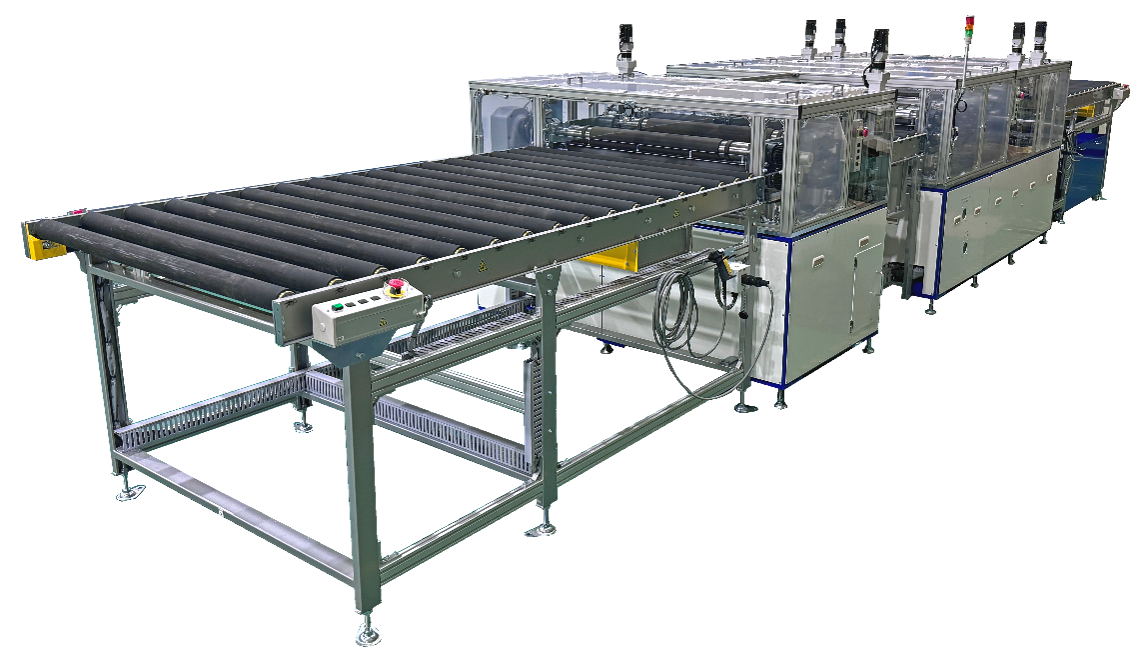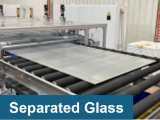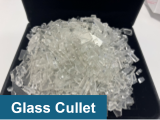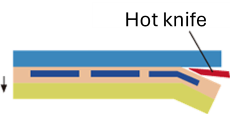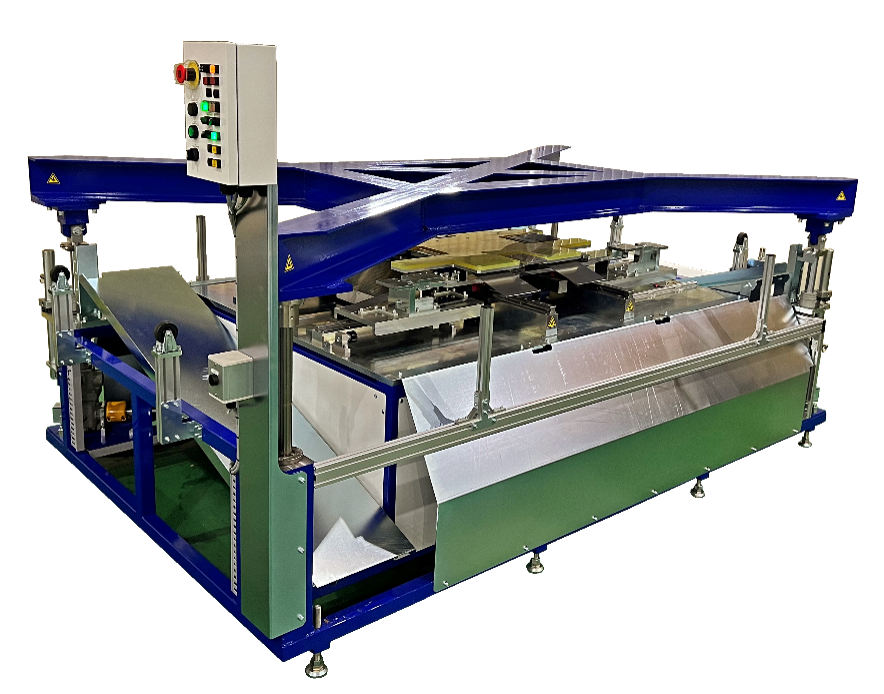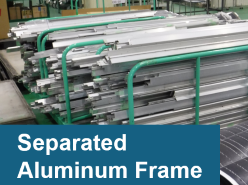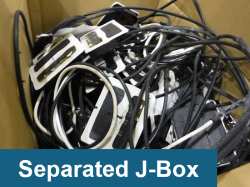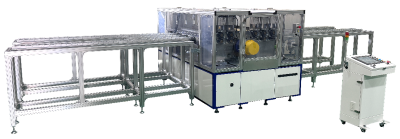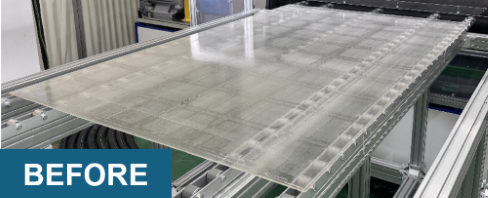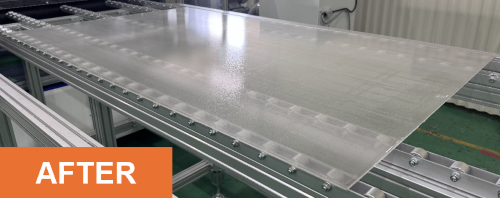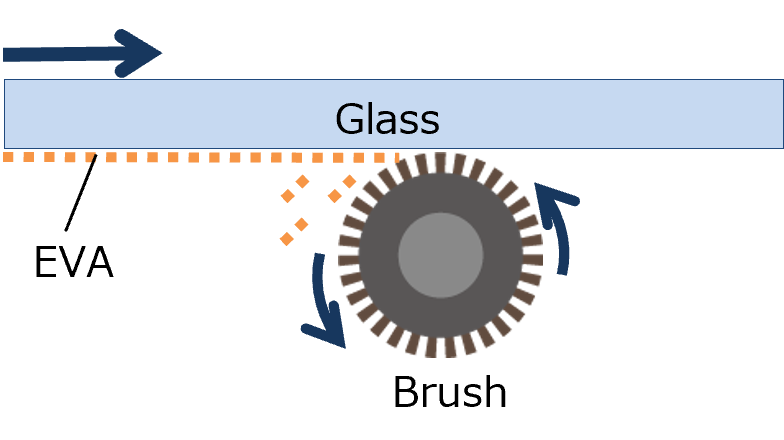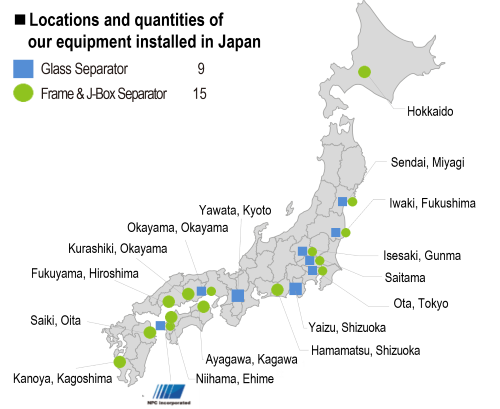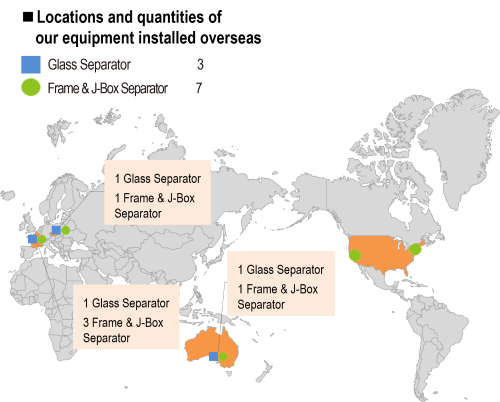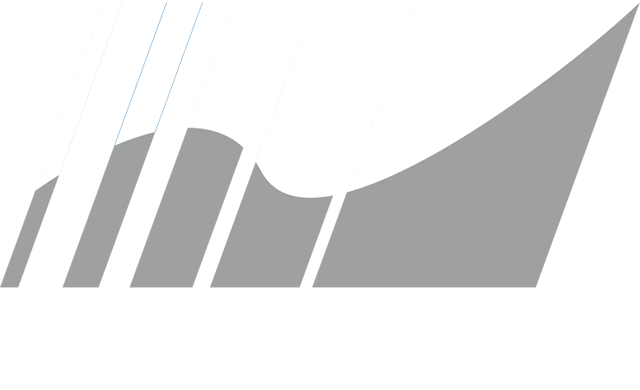Solar Panel Recycling Machine
Make solar panel recycling more efficient and high-quality.
Our equipment realizes no metal residue and breakage on the glass after separation.
Lineups
Glass Separator (Hot Knife)Separates glass and cell/EVA sheet without breaking glass using our original technology, Hot Knife Separation Method.
|
|
||||
|
|
|
Recycle |
|||
Operation |
|||||
What is a Hot Knife Separation Method?
|
|||||
Frame & J-Box Separator(De-Framer)High-quality and cost-effective equipment ideal for initial installation.
|
|
||
|
|
|
||
Operation |
Usable outdoorsCan be operated anywhere as long as a power source is available. Significantly reduces transportation costs by operating on site. |
||
|
|
|||
EVA ScraperRemoves residual EVA on glass surface using our original technology, Brush Scraping Method.
|
|
|
|
|
Operation |
What is a Brush Scraping Method?
|
Establishing the structure for proper recycling of solar panels
|
We have been striving to establish the structure for proper recycling of solar panels. Through the structure, we will aim at creating a circular society of solar power generation.
|
|
|
|
|







